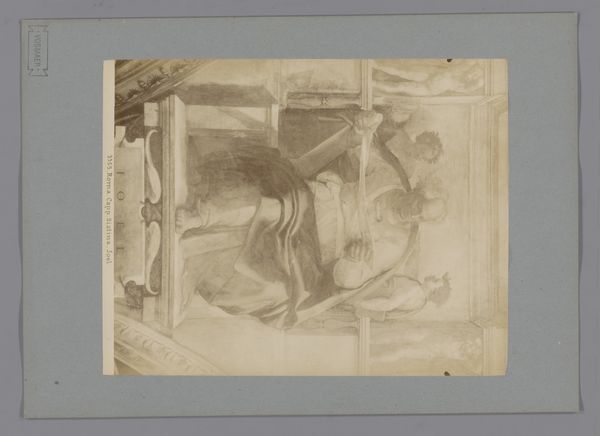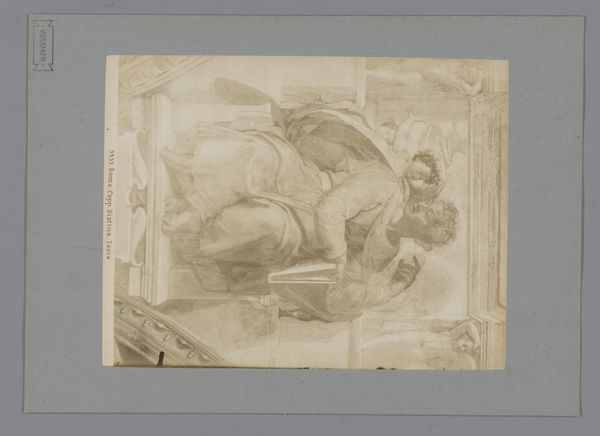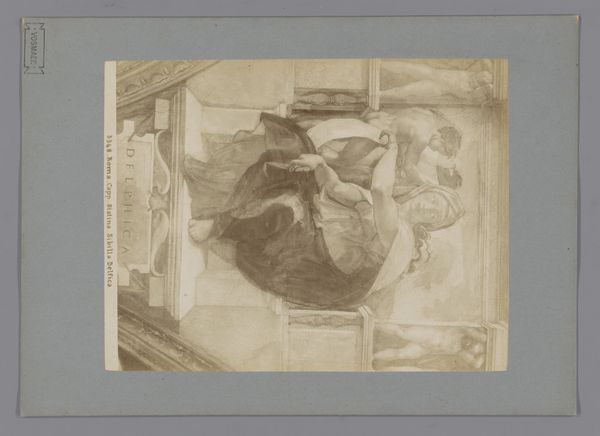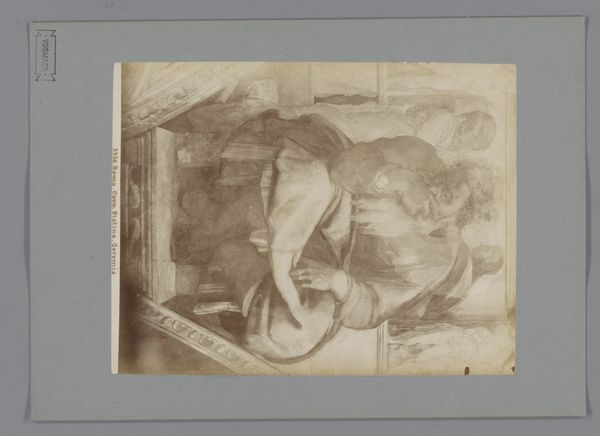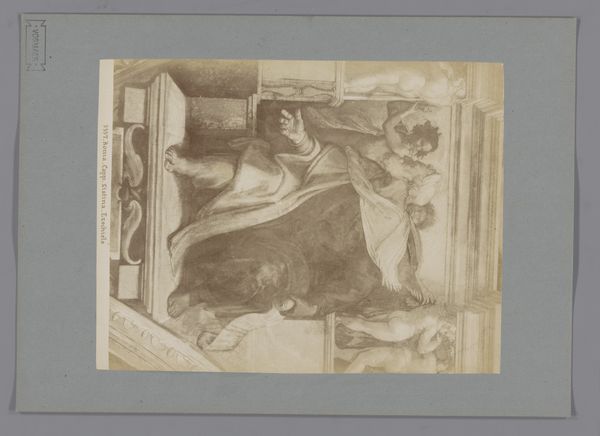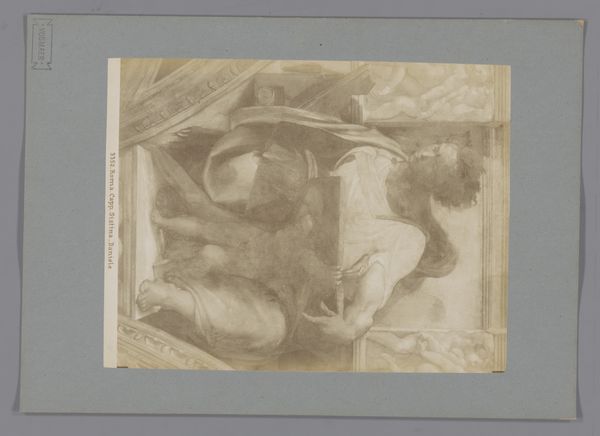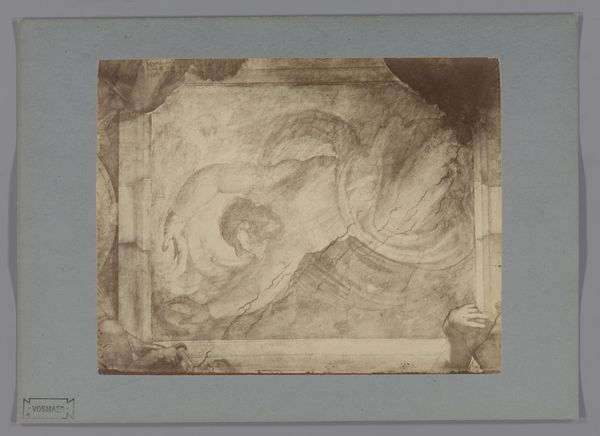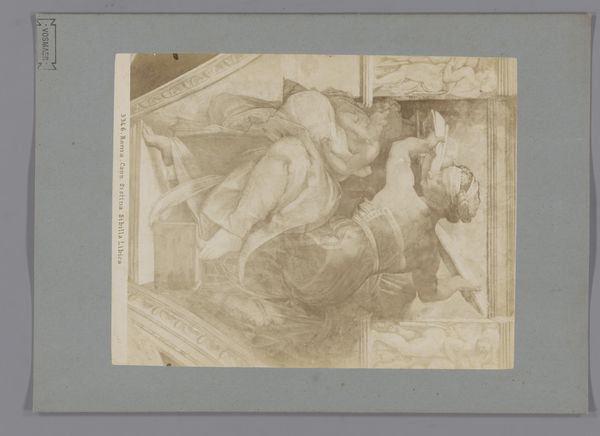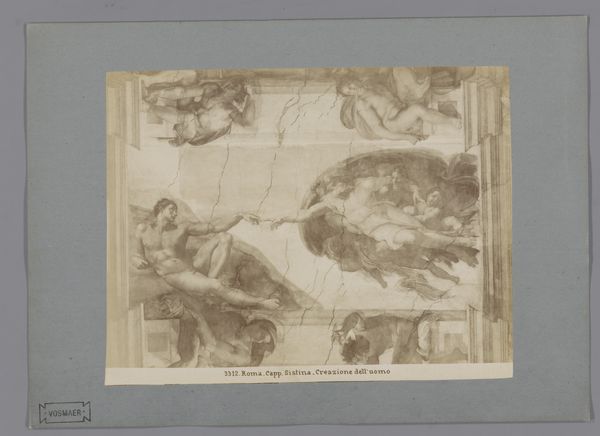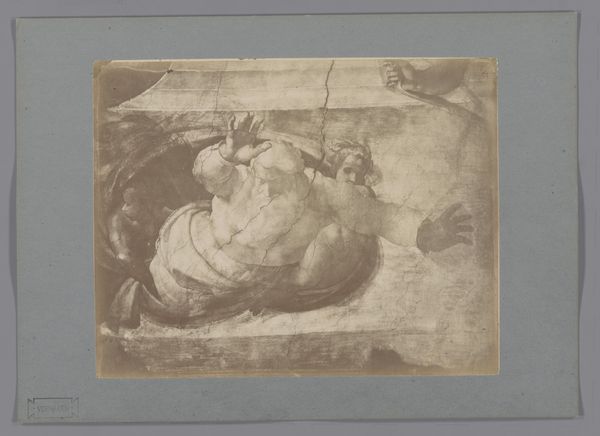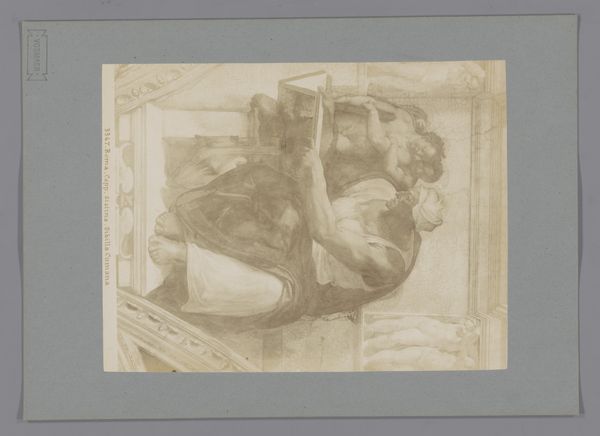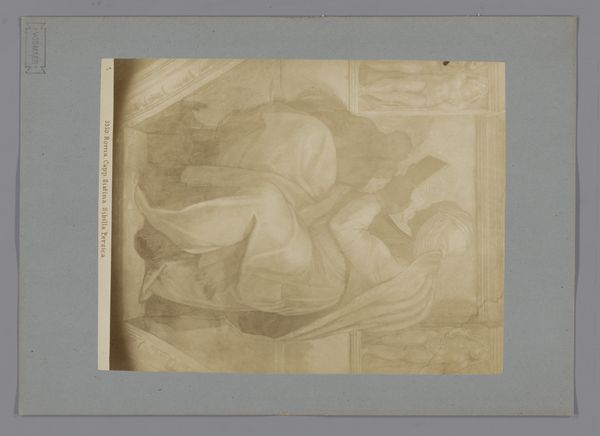
Fotoreproductie van een detail van het fresco Zacharia door Michelangelo in de Sixtijnse kapel 1851 - 1900
0:00
0:00
anonymous
Rijksmuseum
print, photography, gelatin-silver-print
# print
#
figuration
#
11_renaissance
#
photography
#
gelatin-silver-print
#
history-painting
#
italian-renaissance
Dimensions: height 258 mm, width 198 mm, height 354 mm, width 254 mm
Copyright: Rijks Museum: Open Domain
Editor: This gelatin silver print, a photo reproduction of Michelangelo’s fresco Zacharia, made sometime between 1851 and 1900, presents a figure in deep contemplation. What immediately strikes me is the interplay of light and shadow; it creates such a dynamic contrast. What do you see when you look at it? Curator: Indeed. Focus on the disposition of forms within the rectangular frame. Notice how the composition employs a pyramidal structure, with Zacharia at its apex. This geometric organization, derived from Renaissance principles, creates visual stability and directs the viewer's gaze. How do the variations in tonality – the subtle gradations of light and shadow – contribute to this formal arrangement? Editor: Well, the darker tones seem to define the figure’s mass, especially the drapery, while the lighter areas highlight the face and the book, guiding our eyes. Does this contrast also function symbolically? Curator: Semiotically speaking, the contrast could be interpreted as the tension between earthly materiality (the dark robes) and divine intellect or enlightenment (the illuminated book and face). Consider how the photographer chose to isolate this section of the fresco. Does this extraction change our understanding of the original artwork? Editor: I think by isolating Zacharia, it amplifies his individual importance and perhaps invites a more personal, contemplative viewing experience. It reframes the fresco’s grand narrative into a study of human intellect. Curator: Precisely. By isolating this figure, the photograph prompts us to examine not just the image, but also how extraction affects our understanding and interaction with the original composition. Editor: I hadn't considered the impact of the extraction on the whole; thank you for pointing that out. Now I see so many layers beyond the figure itself.
Comments
No comments
Be the first to comment and join the conversation on the ultimate creative platform.
